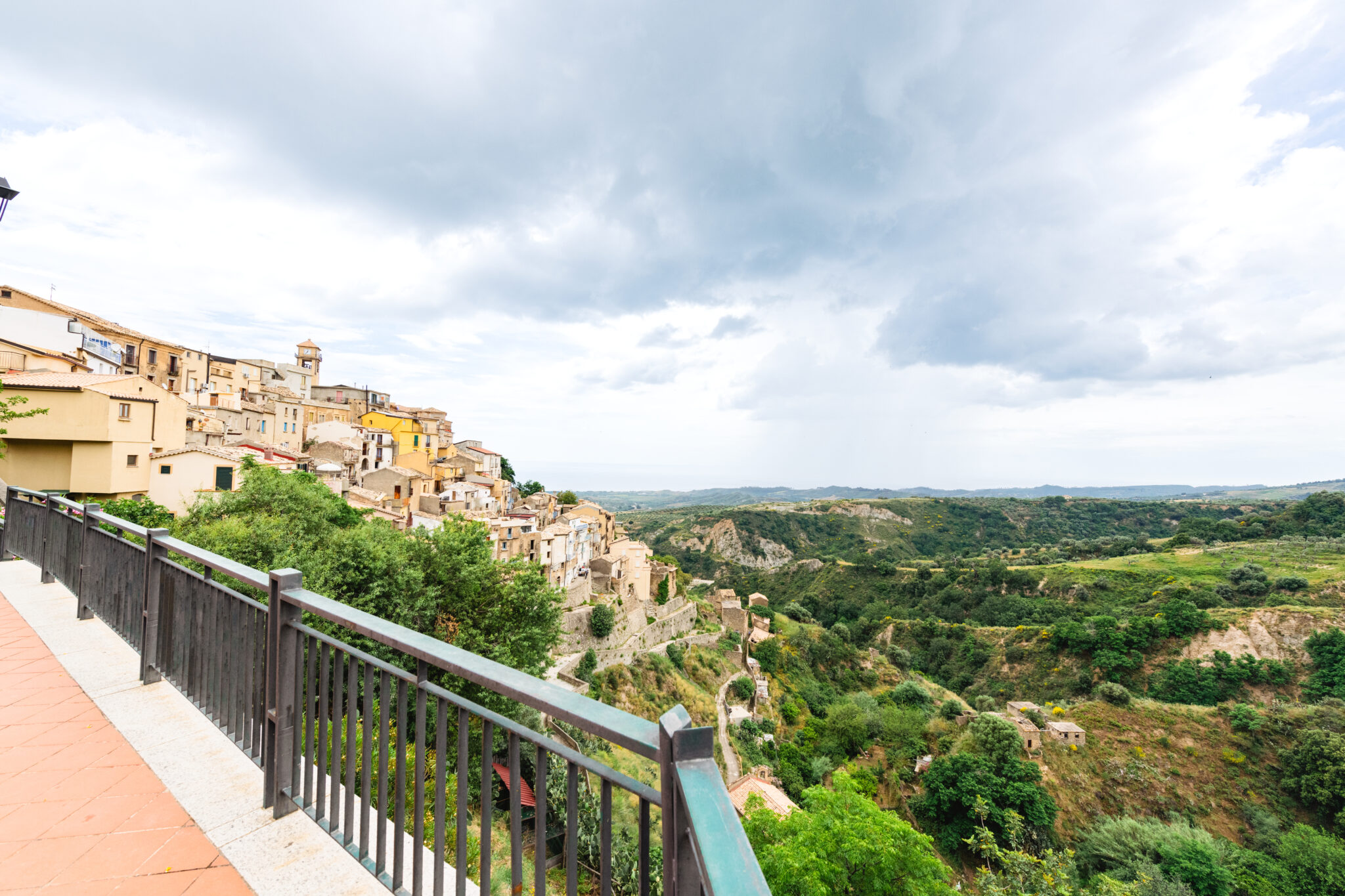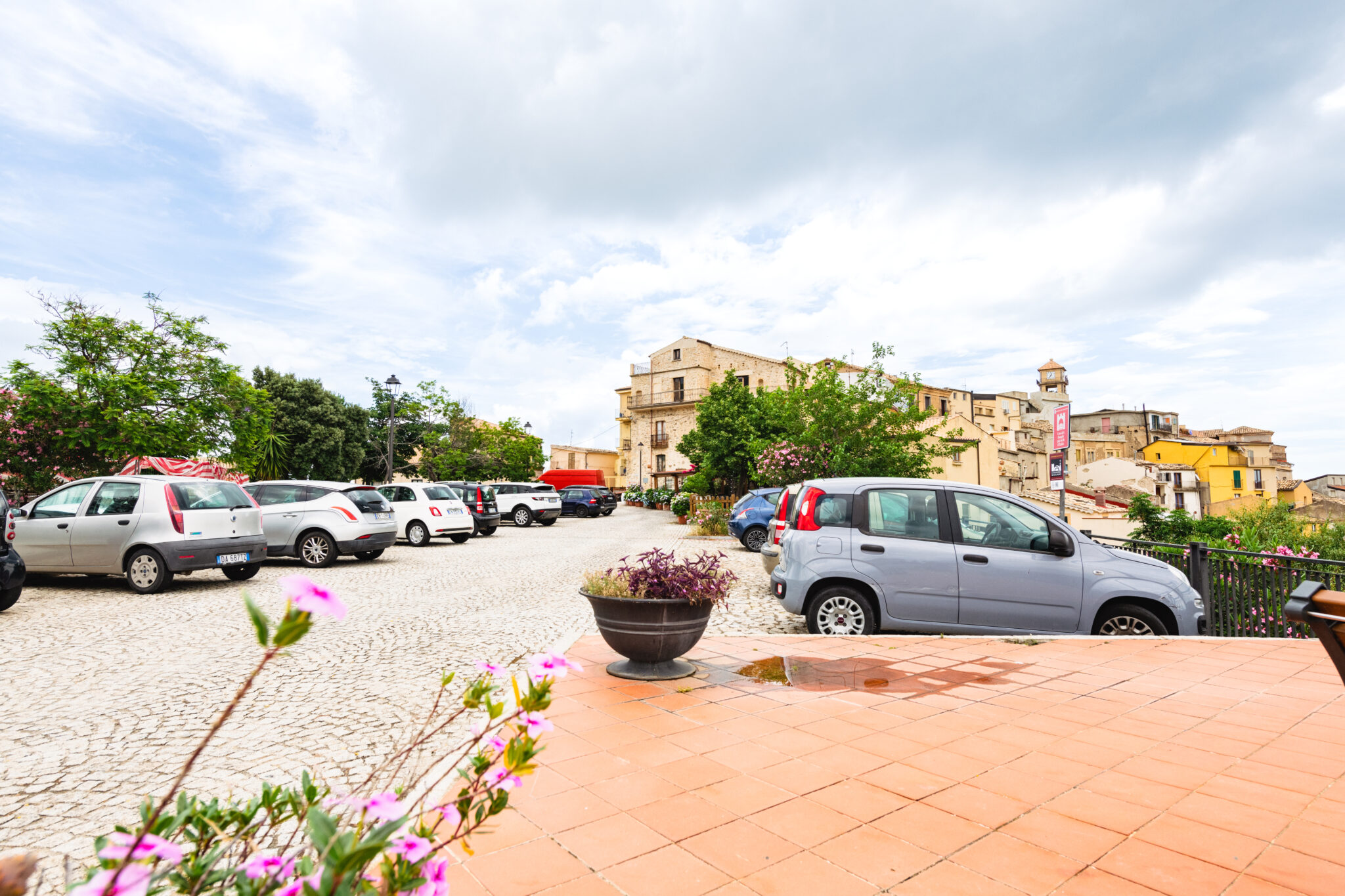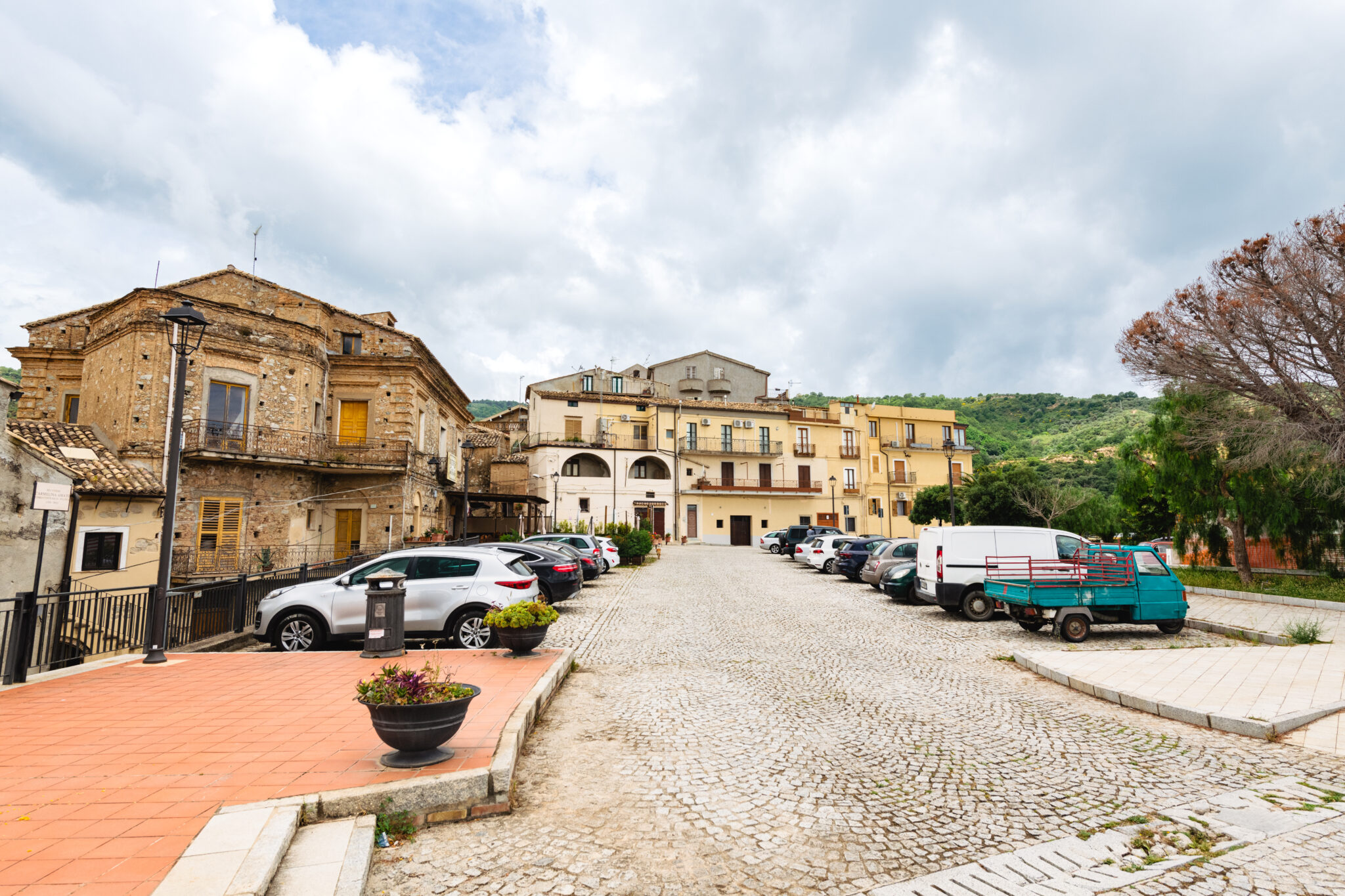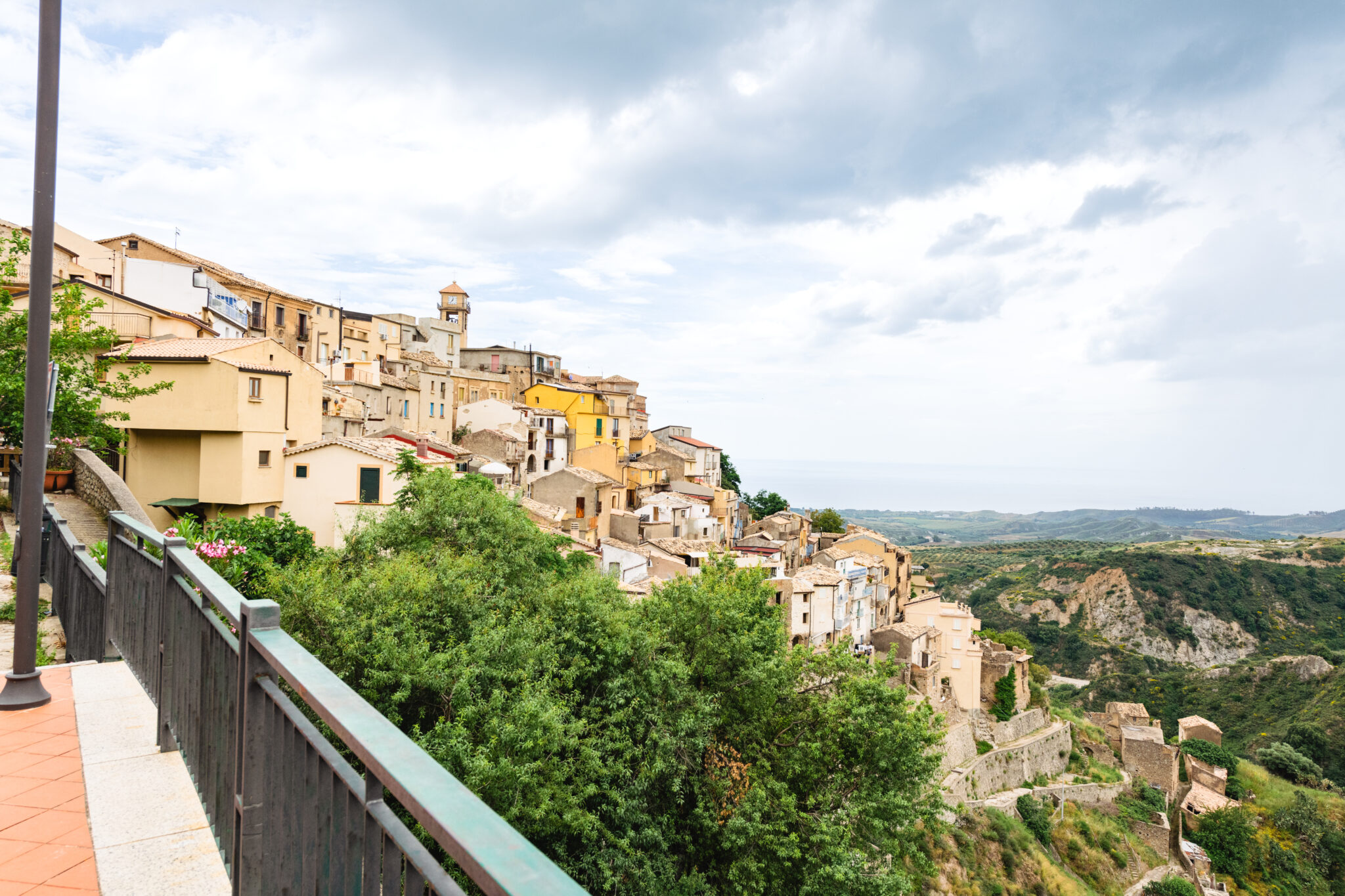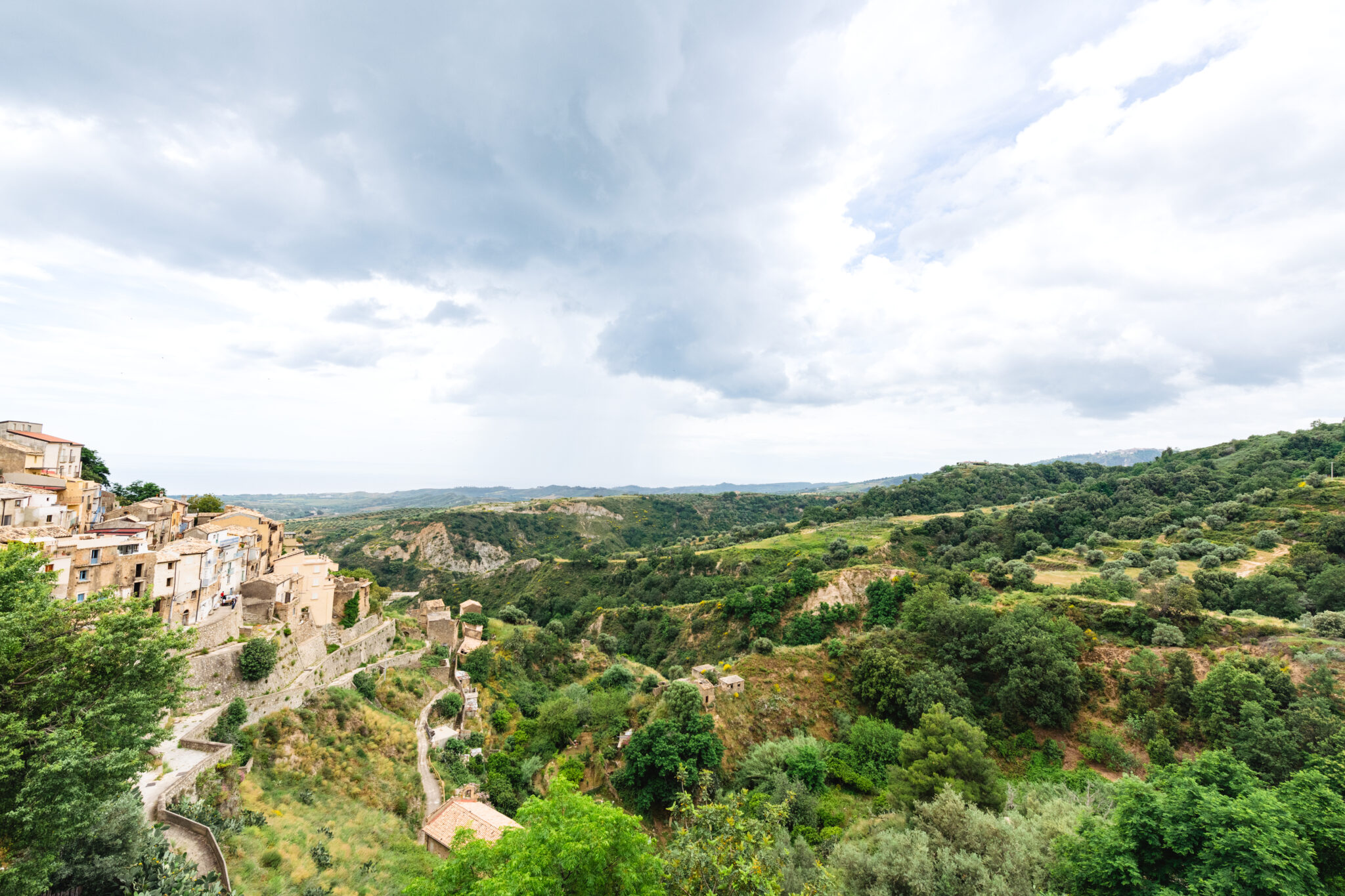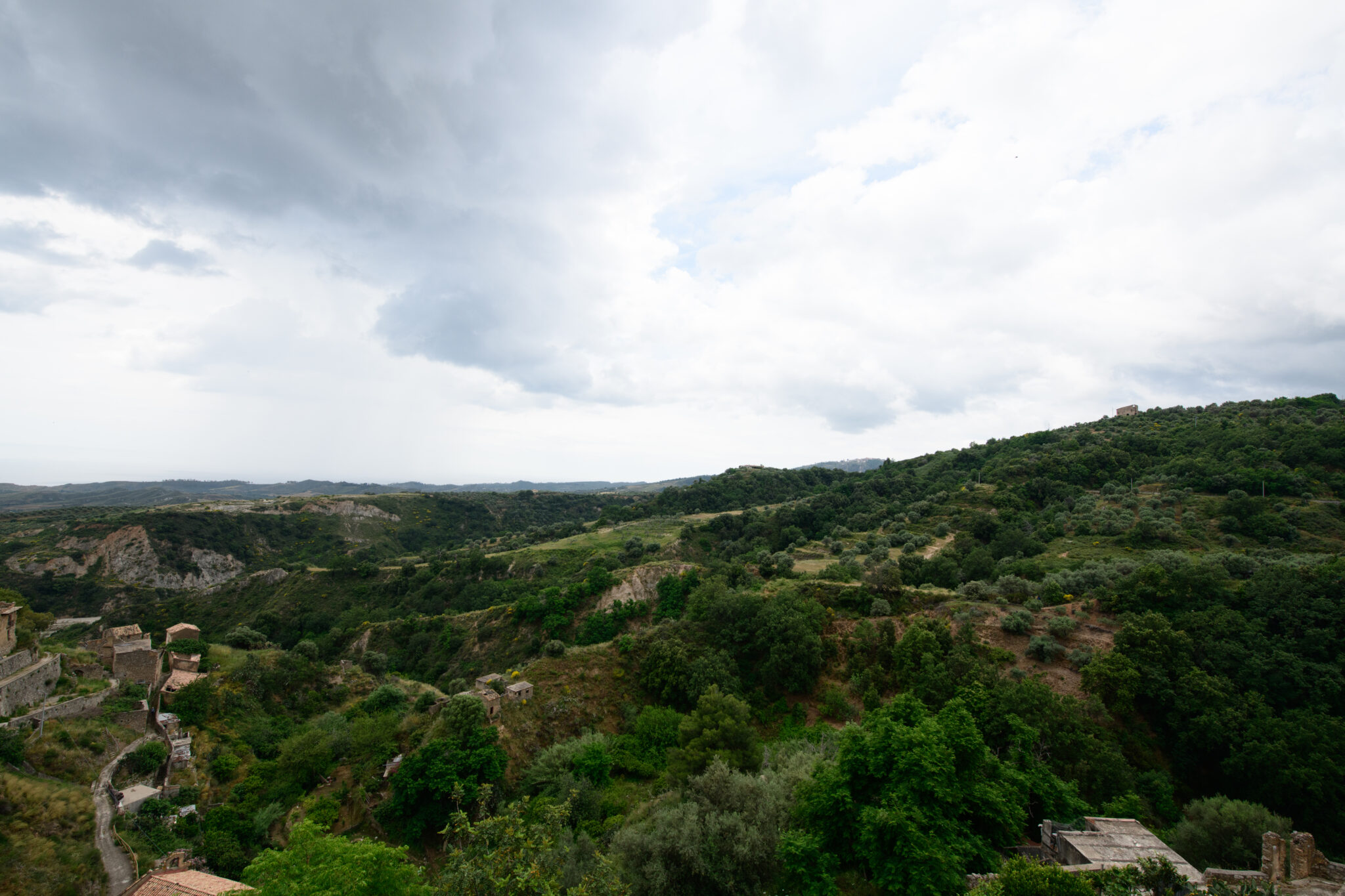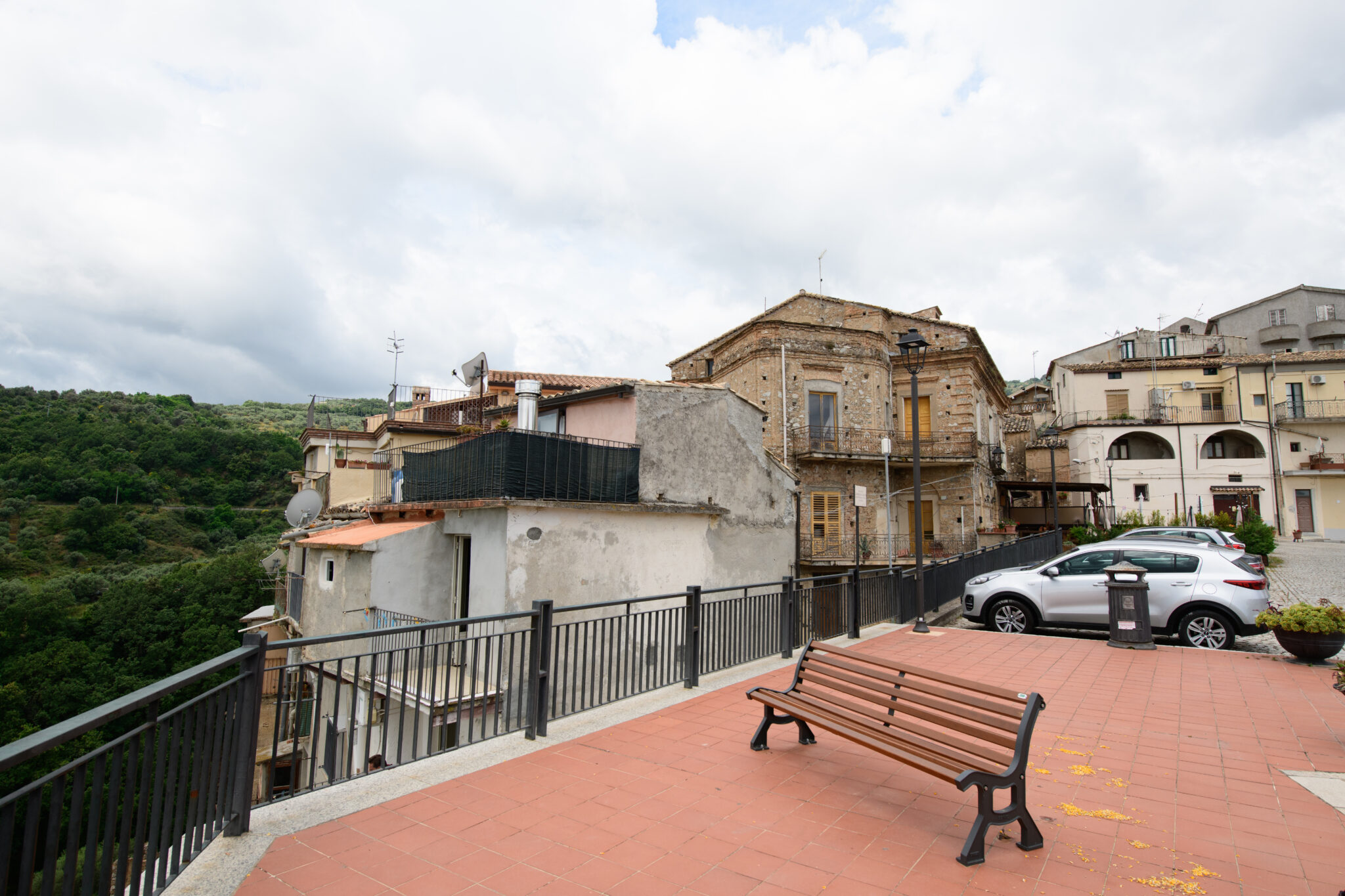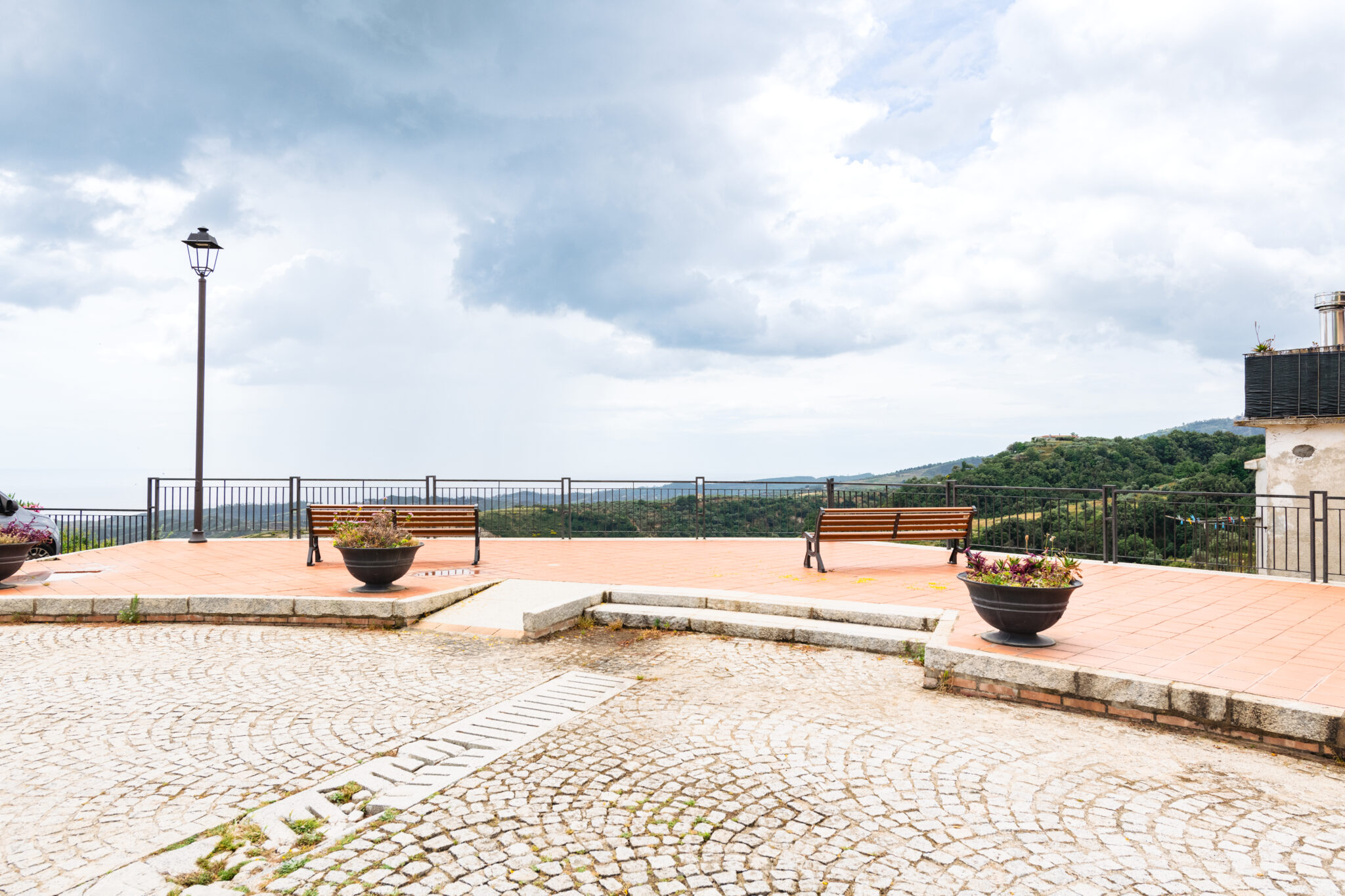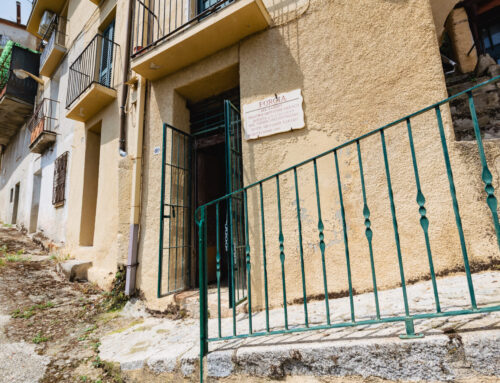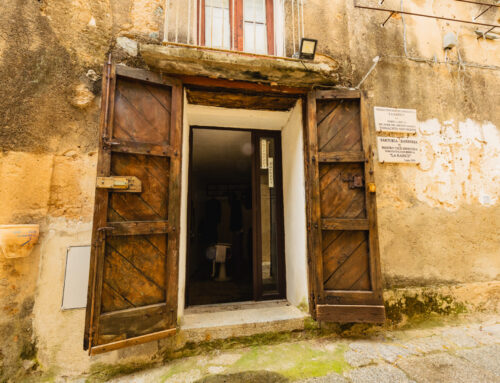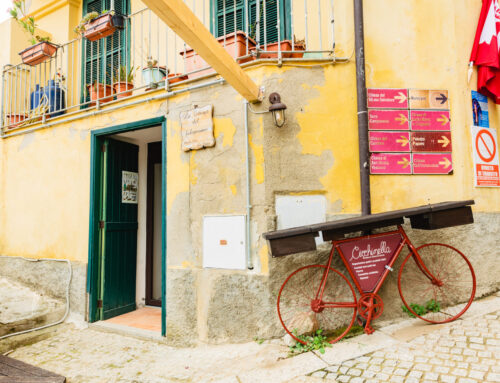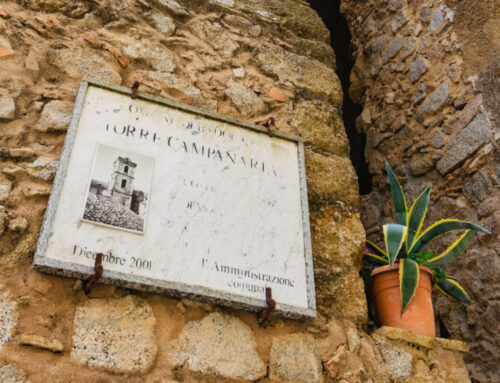The toponym is about 40 years old, because where the square is now, until 1981, there was a hill. The hill was 34 metres high and housed the “castle” of the feudal lord of Badolato. At the top of the hill there were still the foundations and at the base, along the perimeter, there were the remains of the walls, the remains of the protective enclosure.
The decision to demolish the hill was taken by the municipal authorities and all the other political forces. In its place, a square was built in 1980-81, which was demolished a few years later by other administrations in order to build a new one with different structural characteristics. This second square was also never completed and was demolished in 2001 to be rebuilt with very different characteristics from the previous one. The current square remains as it was originally and seems to meet the needs of a welcoming and functional square, and is therefore expected to have a long life.
A section of the wall of the castle still remains, occupying the base of the small hill on the north side, although it is no longer recognisable due to alterations for new purposes. It is notable for its considerable thickness and for a double grille, both inside and out, made of round iron, not welded but interwoven. This corner of the castle was originally the guard’s room, later it became the local prison and for years it was used as a carpenter’s workshop.
Piazza Castello, which also includes Piazza Fosso, is now the centre of the many cultural and other events that take place in the village, especially during the summer, for the enjoyment of the few residents of Badolato Borgo, the foreigners who have bought houses here and the many people who come from Badolato Marina and other towns.
In the southern part of Piazza Castello, there is an extended area which, raised above the level of the square, can be considered a corner in its own right. Here, on 25 April 2019, during a public event, the Municipality will unveil a plaque in honour of Carmelina Amato (1926-2002), a resolute fighter who even endured imprisonment for the liberation of the proletariat.
From the belvedere you can see the ruins of Destru, the church of Providence, the sea, Santa Caterina and the provincial road that connects the town to Badolato. In the foreground you can see the ruins of the Casino di Gianbàrtolo, where on 9th September 1943 an Italian artillery post fired the last shots at the enemy allies who were advancing along the Ionian coast, chasing and destroying the fleeing Germans.
The “Casino” was also the lively and determined “headquarters” of the struggle of the Badolato workers’ movement for the realisation of a road connecting the mountain, the Serra San Bruno and the Tyrrhenian Sea. This was known as the “reverse strike” and lasted from October 1950 to January 1951.


